Understanding Steering Systems
MacPherson System
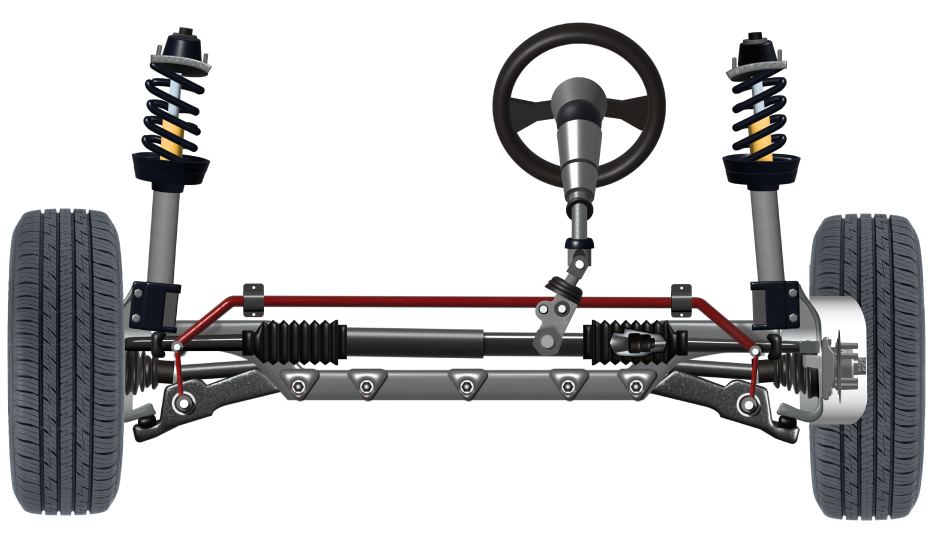
Strut Mount Bearing Plates
A strut mount bearing plate is a component that supports the upper end of a strut, allowing it to pivot when steering the vehicle for a smooth ride and precise handling.
When to replace the part:
Replace your bearing plates when they begin making noise when turning or going over bumps.
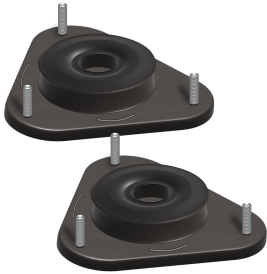
Sway Bar Bushings
A sway bar bushing is a rubber bushing that buffers the mounting point between the sway bar and frame
When to replace the part:
Ozone and elements degrade sway bar bushings, requiring replacement.

Outer Tie Rod End
A tie rod end is a steering component that connects the steering linkage to the wheels, facilitating controlled steering and alignment.
When to replace the part:
Any tie rod should be replaced when any movement can be detected in the joint that exceeds the manufacturer’s specifications.
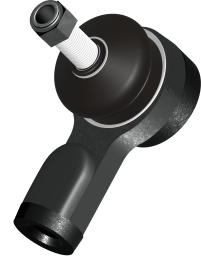
Ball Joint
A ball joint is a pivotal, ball and socket-style, connection between a vehicle's control arm and steering knuckle, enabling smooth movement and steering flexibility.
When to replace the part:
Ball joints need replaced when movement within the system exceeds manufacturer specs or if physical damage occurs.

Sway Bar End Links
A sway bar end link connects the sway bar to the suspension components, allowing the sway bar to prevent excessive vehicle body roll.
When to replace the part:
Replace sway bar end links that show wear or that make noise on uneven roads.
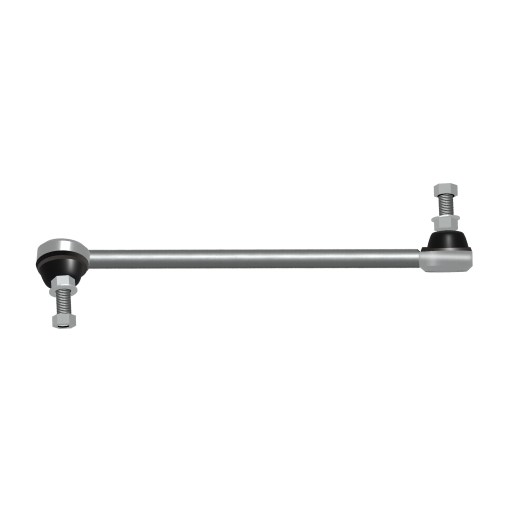
Rack And Pinion
A rack and pinion is a hydraulic steering system that converts steering wheel movement to movement in the steering linkage, and eventually, the wheels, allowing you to turn smoothly.
When to replace the part:
A rack and pinion should be replaced when the hydraulic seals fail or if the steering starts getting stiff when turning in either direction.

Inner Tie Rod (Rack And Pinion)
An inner tie rod is a steering component connected to the steering rack, controlling the movement of the front wheels. It assists in translating the driver's input into wheel motion for accurate steering.
When to replace the part:
Any tie rod should be replaced when any movement can be detected in the joint that exceeds the manufacturer’s specifications.

CV Axle
A CV axle is a drivetrain component that transfers power from the transmission to the wheels, allowing flexible movement and power delivery while turning.
When to replace the part:
Replace CV axles when they're noisy during sharp turns, while accelerating, or if torn boots result in grease leakage and dirt infiltration.
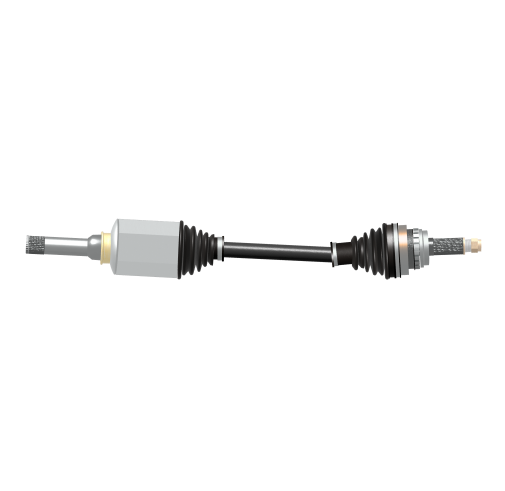
Hub/Bearing Assembly
A hub assembly is a component that houses the wheel bearings and connects the wheel to the vehicle's axle, enabling smooth wheel rotation while supporting the weight of the vehicle.
When to replace the part:
Replace or service bearings or hub assemblies when they make rotational noise or have detectable play beyond the manufacturer specifications.
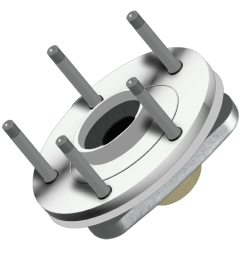
Double Wishbone System
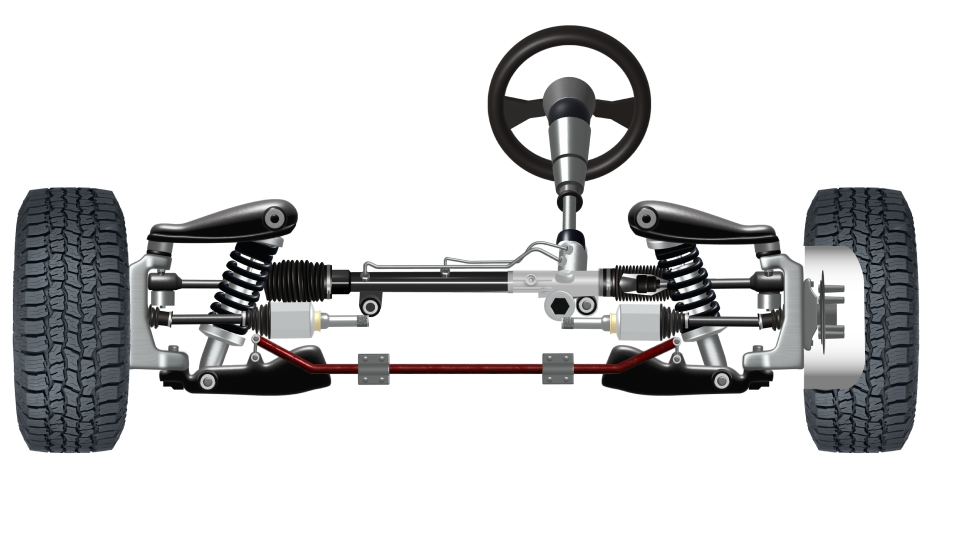
Ball Joint
A ball joint is a pivotal, ball and socket-style, connection between a vehicle's control arm and steering knuckle, enabling smooth movement and steering flexibility.
When to replace the part:
Ball joints need replaced when movement within the system exceeds manufacturer specs or if physical damage occurs.

CV Axle
A CV axle is a drivetrain component that transfers power from the transmission to the wheels, allowing flexible movement and power delivery while turning.
When to replace the part:
Replace CV axles when they're noisy during sharp turns, while accelerating, or if torn boots result in grease leakage and dirt infiltration.

Rack And Pinion
A rack and pinion is a hydraulic steering system that converts steering wheel movement to movement in the steering linkage, and eventually, the wheels, allowing you to turn smoothly.
When to replace the part:
A rack and pinion should be replaced when the hydraulic seals fail or if the steering starts getting stiff when turning in either direction.

Inner Tie Rod (Rack And Pinion)
An inner tie rod is a steering component connected to the steering rack, controlling the movement of the front wheels. It assists in translating the driver's input into wheel motion for accurate steering.
When to replace the part:
Any tie rod should be replaced when any movement can be detected in the joint that exceeds the manufacturer’s specifications.

Outer Tie Rod End
A tie rod end is a steering component that connects the steering linkage to the wheels, facilitating controlled steering and alignment.
When to replace the part:
Any tie rod should be replaced when any movement can be detected in the joint that exceeds the manufacturer’s specifications.

Ball Joint
A ball joint is a pivotal, ball and socket-style, connection between a vehicle's control arm and steering knuckle, enabling smooth movement and steering flexibility.
When to replace the part:
Ball joints need replaced when movement within the system exceeds manufacturer specs or if physical damage occurs.

Sway Bar End Links
A sway bar end link connects the sway bar to the suspension components, allowing the sway bar to prevent excessive vehicle body roll.
When to replace the part:
Replace sway bar end links that show wear or that make noise on uneven roads.

Sway Bar Bushings
A sway bar bushing is a rubber bushing that buffers the mounting point between the sway bar and frame
When to replace the part:
Ozone and elements degrade sway bar bushings, requiring replacement.

Control Arm Bushings
A control arm bushing is a flexible component that connects a vehicle's control arm to the chassis, allowing controlled movement and absorbing road vibrations for smoother handling and improved comfort.
When to replace the part:
Replace cracked bushings or bushings with excessive movement for a smooth, quiet and controlled ride.
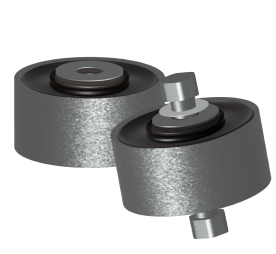
Hub/Bearing Assembly
A hub assembly is a component that houses the wheel bearings and connects the wheel to the vehicle's axle, enabling smooth wheel rotation while supporting the weight of the vehicle.
When to replace the part:
Replace or service bearings or hub assemblies when they make rotational noise or have detectable play beyond the manufacturer specifications.

Independent Linkage System
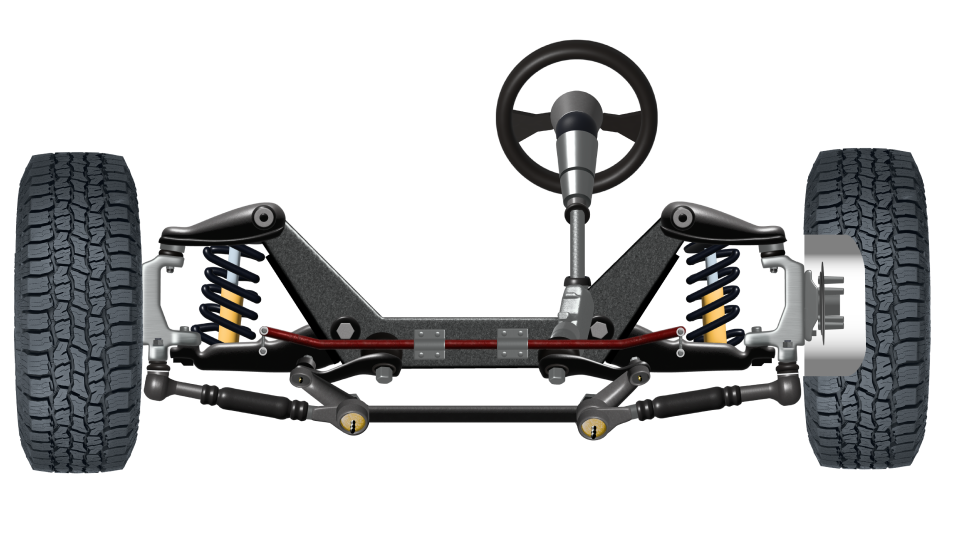
Ball Joint
A ball joint is a pivotal, ball and socket-style, connection between a vehicle's control arm and steering knuckle, enabling smooth movement and steering flexibility.
When to replace the part:
Ball joints need replaced when movement within the system exceeds manufacturer specs or if physical damage occurs.

Sway Bar Bushings
A sway bar bushing is a rubber bushing that buffers the mounting point between the sway bar and frame
When to replace the part:
Ozone and elements degrade sway bar bushings, requiring replacement.

Steering Gear Box
A steering gearbox is a crucial component that translates the driver's steering input into movement of the front wheels, enabling controlled direction changes in a vehicle.
When to replace the part:
A gearbox may need replaced when hydraulic
seals leak or if steering becomes excessively stiff,
loose or delayed.
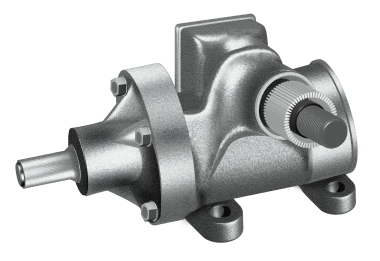
Control Arm Bushings
A control arm bushing is a flexible component that connects a vehicle's control arm to the chassis, allowing controlled movement and absorbing road vibrations for smoother handling and improved comfort.
When to replace the part:
Replace cracked bushings or bushings with excessive movement for a smooth, quiet and controlled ride.

Hub/Bearing Assembly
A hub assembly is a component that houses the wheel bearings and connects the wheel to the vehicle's axle, enabling smooth wheel rotation while supporting the weight of the vehicle.
When to replace the part:
Replace or service bearings or hub assemblies when they make rotational noise or have detectable play beyond the manufacturer specifications.

Ball Joint
A ball joint is a pivotal, ball and socket-style, connection between a vehicle's control arm and steering knuckle, enabling smooth movement and steering flexibility.
When to replace the part:
Ball joints need replaced when movement within the system exceeds manufacturer specs or if physical damage occurs.

Sway Bar End Links
A sway bar end link connects the sway bar to the suspension components, allowing the sway bar to prevent excessive vehicle body roll.
When to replace the part:
Replace sway bar end links that show wear or that make noise on uneven roads.

Inner Tie Rod (Linkage Style)
A tie rod end is a steering component that connects the steering linkage to the wheels, facilitating controlled steering and alignment.
When to replace the part:
Any tie rod should be replaced when any movement
can be detected in the joint that exceeds the
manufacturer’s specifications.
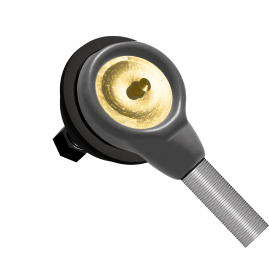
Idler Arm
An idler arm is a steering component that supports the steering linkage, helping to maintain proper alignment and smooth steering movement in the vehicle.
When to replace the part:
Any detectable movement beyond the manufacturer's specifications in the idler arm joint would warrant replacement to maintain proper alignment and vehicle handling.
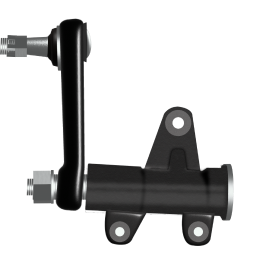
Center Link
A center link is a steering component that connects the steering gearbox to the front wheels, facilitating precise steering control.
When to replace the part:
A center link will often have pivoting connection joints that will wear over time. Replace the center link if movement in these joints exceeds the manufacturer's specifications.

Pitman Arm
A pitman arm is the primary steering component that connects the steering gearbox to the steering linkage, aiding in the controlled movement of the wheels.
When to replace the part:
Replace your pitman arm when movement beyond
the manufacturer's specifications can be detected
in the joint.
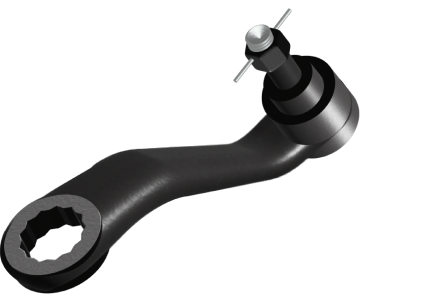
Tie Rod Adjusting Sleeve
Tie rod adjusting sleeves allow alignment
adjustments to be made with linkage-style steering
systems.
When to replace the part:
These typically only need replaced when they are
physically damaged from impact or
when seized or rusted to the tie rod.
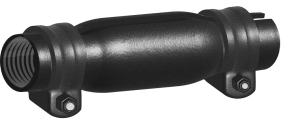
Outer Tie Rod End
A tie rod end is a steering component that connects the steering linkage to the wheels, facilitating controlled steering and alignment.
When to replace the part:
Any tie rod should be replaced when any movement can be detected in the joint that exceeds the manufacturer’s specifications.

Solid Axle Linkage System
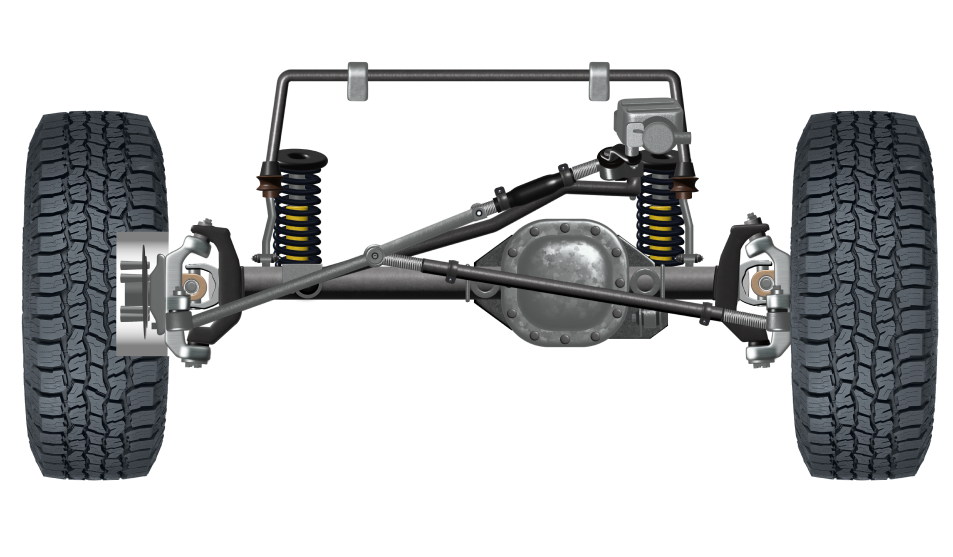
Sway Bar End Links
A sway bar end link connects the sway bar to the suspension components, allowing the sway bar to prevent excessive vehicle body roll.
When to replace the part:
Replace sway bar end links that show wear or that make noise on uneven roads.

Outer Tie Rod End
A tie rod end is a steering component that connects the steering linkage to the wheels, facilitating controlled steering and alignment.
When to replace the part:
Any tie rod should be replaced when any movement can be detected in the joint that exceeds the manufacturer’s specifications.

Drag Link
A drag link is a steering component that connects the steering gearbox to the steering linkage, aiding in transmitting driver inputs to the front wheels for controlled steering and proper alignment.
When to replace the part:
Noticeable movement beyond the manufacturer's specifications in the drag link joint would warrant replacement to maintain proper handling.

Track Bar
A track bar is a suspension component that helps maintain lateral stability by connecting the chassis to the axle, controlling side-to-side movement.
When to replace the part:
Track bars feature ball/socket or bushing mounts. When movement is detected, replace or service the part.

Inner Tie Rod (Linkage Style)
A tie rod end is a steering component that connects the steering linkage to the wheels, facilitating controlled steering and alignment.
When to replace the part:
Any tie rod should be replaced when any movement
can be detected in the joint that exceeds the
manufacturer’s specifications.

Sway Bar Bushings
A sway bar bushing is a rubber bushing that buffers the mounting point between the sway bar and frame
When to replace the part:
Ozone and elements degrade sway bar bushings, requiring replacement.

Steering Gear Box
A steering gearbox is a crucial component that translates the driver's steering input into movement of the front wheels, enabling controlled direction changes in a vehicle.
When to replace the part:
A gearbox may need replaced when hydraulic
seals leak or if steering becomes excessively stiff,
loose or delayed.

Ball Joint
A ball joint is a pivotal, ball and socket-style, connection between a vehicle's control arm and steering knuckle, enabling smooth movement and steering flexibility.
When to replace the part:
Ball joints need replaced when movement within the system exceeds manufacturer specs or if physical damage occurs.

Hub/Bearing Assembly
A hub assembly is a component that houses the wheel bearings and connects the wheel to the vehicle's axle, enabling smooth wheel rotation while supporting the weight of the vehicle.
When to replace the part:
Replace or service bearings or hub assemblies when they make rotational noise or have detectable play beyond the manufacturer specifications.

Inner Tie Rod (Linkage Style)
A tie rod end is a steering component that connects the steering linkage to the wheels, facilitating controlled steering and alignment.
When to replace the part:
Any tie rod should be replaced when any movement
can be detected in the joint that exceeds the
manufacturer’s specifications.

Tie Rod Adjusting Sleeve
Tie rod adjusting sleeves allow alignment
adjustments to be made with linkage-style steering
systems.
When to replace the part:
These typically only need replaced when they are
physically damaged from impact or
when seized or rusted to the tie rod.

Axle Shaft U-Joint
An axle shaft U-joint connects the axle shaft to the wheel hub, allowing for the transmission of power to the wheels while accommodating changes in the steering angle.
When to replace the part:
U-Joints should be replaced when they begin to bind under pressure or make noise when turning as the vehicle is in motion.

Ball Joint
A ball joint is a pivotal, ball and socket-style, connection between a vehicle's control arm and steering knuckle, enabling smooth movement and steering flexibility.
When to replace the part:
Ball joints need replaced when movement within the system exceeds manufacturer specs or if physical damage occurs.

Select a label to learn more about the individual component.